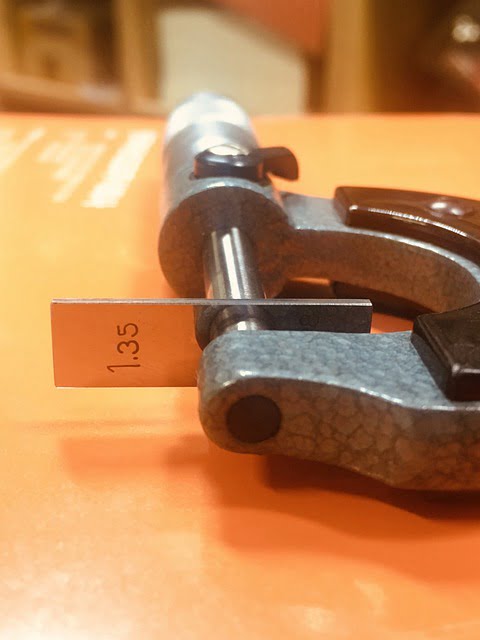Calibration is to find out the measurement error. According to the measurement error that is observed, verification is to decide whether it is within the tolerance (permissible error) or not. Then, validation is to make sure it measures what it’s meant to.
In some cases, verification and validation overlap.
Calibration
According to NIST, calibration is [Source: International Vocabulary of Metrology – Basic and General Concepts and Associated Terms (VIM) 3rd edition (Final draft 2006-08-01)]
operation that, under specified conditions, in a first step establishes a relation between the quantity values with measurement uncertainties provided by measurement standards and corresponding indications with associated measurement uncertainties and, in a second step, uses this information to establish a relation for obtaining a measurement result from an indication.
NOTES:
1 — A calibration may be expressed by a statement, calibration function, calibration diagram, calibration curve, or calibration table. In some cases it may consist of an additive or multiplicative correction of the indication with associated uncertainty.
2 — Calibration should not be confused with adjustment of a measuring system, often mistakenly called ‘self-calibration’, nor with verification of calibration.
3 — Sometimes the first step alone in the above definition is perceived as being calibration.

Calibration is to compare a particular measuring instrument to the standard. This activity carries a mission to determine the measurement error of the instrument. After that, you have to take the uncertainty value into account. Make sure to document all the results.
The calibration regulates with a certain time interval (1 year or more).
The standard must be more accurate than the instrument under calibration. This instrument being compared is called UUC (Unit Under Calibrated). The standard also must be traceable to international or national standards.
For example:
- Comparing a dial caliper or digital caliper to a working or master gauge block.
- Comparing the working gauge block (lower grade) to a master gauge block (greater grade).
- Comparing pressure gauge to a deadweight tester.
Sometimes, we can adjust the measurement according to its error such as a micrometer by using the wrench. But sometimes, we cannot adjust it such as gauge block. If the adjustment is impossible to do, we can subtract the measurement to the error value.
Verification
According to NIST, verification is: [Source: International Vocabulary of Metrology – Basic and General Concepts and Associated Terms (VIM) 3rd edition (Final draft 2006-08-01)]
provision of objective evidence that a given item fulfils specified requirements, taking any measurement uncertainty into consideration.
EXAMPLES
a) Confirmation that a given reference material as claimed is homogeneous for the quantity and measurement procedure concerned, down to a test portion having a mass of 10 mg.
b) Confirmation that stated performance properties or legal requirements of a measuring system are achieved.
c) Confirmation that a stated target measurement uncertainty can be met.NOTES
1 — The item may be, e.g., a process, measurement procedure, material, compound, or measuring system.
2 — The specified requirements may be, e.g., that a manufacturer’s specifications are met.
3 — In legal metrology, verification pertains to the examination and marking and/or issuing of a verification certificate for a measuring instrument.
4 — Verification should not be confused with calibration or validation.
5 — In chemistry, verification of identity of entity involved, or of activity, requires a description of the structure or properties of that entity or activity.
Verification is to assess whether the instrument meets the specification. If we have calibrated the instrument, we need to take into account the measurement error and uncertainty. This consideration is to decide whether the instrument is still within the tolerance (permissible error) or not.
If it is within the tolerance, it passes. Whereas, it fails when out of tolerance.
In this case, the specification can be from your requirement or other operators.
Validation
According to NIST, validation is: [Source: International Vocabulary of Metrology – Basic and General Concepts and Associated Terms (VIM) 3rd edition (Final draft 2006-08-01)]
verification, where the specified requirements are adequate for a stated use
EXAMPLE
A measurement procedure, ordinarily used for the measurement of nitrogen concentration in
water, may be validated also for the measurement of nitrogen concentration in human serum.
Validation is to determine whether the instrument is suitable for the intended use.
For example:
Even though the digital caliper passes the specification, the digital caliper is surely not valid for checking runout. A test indicator is correct to use for cylinder runout. Additionally, a digital caliper is also not the best option to measure the paper thickness. To measure paper thickness, a special thickness gauge with a broader anvil surface is required to reduce the pressure on the paper.
In some cases, a certain case needs a standard to perform a measurement. You could find the ASTM operation standard document or the NIST version to learn the procedure. For example, Standard Practice for Using Hand Calipers to Measure the Width of Steel Sheet. You need to stick with the standard to use the caliper in steel sheet measurement.
If you have calibrated your caliper and declare it as passing the specification (you measure in the right way), and you apply it for the right thing, the measurement is valid.
